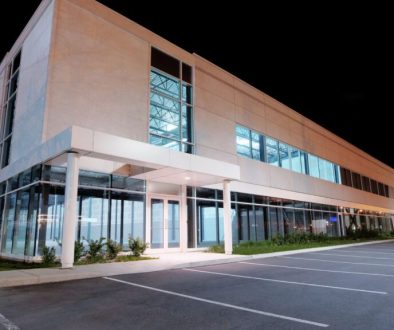Why Flex Spaces Are a Smart Investment Choice
Investing in flex spaces may just be the smartest move for your portfolio. Discover why this versatile real estate option is taking the market by storm.
Why Flex Spaces Are a Smart Investment Choice
Flex spaces are revolutionizing the way businesses utilize commercial real estate. As the demand for adaptable work environments grows, investing in flex spaces presents a unique opportunity for investors seeking flexibility, diversification, and long-term profitability. This blog post explores the rise of flex spaces, their benefits, and the key considerations for investors looking to capitalize on this emerging trend.
Introduction
In today’s fast-paced business environment, flexibility is the name of the game. Companies are increasingly seeking spaces that can adapt to their changing needs—whether it’s for office use, warehousing, or retail. This growing demand has given rise to flex spaces, a hybrid real estate option that combines various functionalities within a single property. Flex spaces typically feature open layouts that can accommodate different types of businesses, allowing for easy reconfiguration as needs evolve. This shift in the commercial real estate landscape not only reflects changing workplace dynamics but also presents a lucrative investment opportunity for savvy investors. In this article, we will delve into the reasons why flex spaces are a smart investment choice, examining their advantages, market trends, and best practices for investors.
Understanding Flex Spaces
Flex spaces are designed to accommodate a variety of uses, which makes them highly appealing to businesses looking for versatile solutions. These properties typically blend office, warehouse, and retail spaces into a single unit, enabling tenants to customize the environment according to their needs.
- Market Demand: The shift towards remote work and e-commerce has intensified demand for such adaptable spaces. For instance, businesses that require storage for inventory can benefit from the warehouse components of flex spaces while still having room for office operations and customer interactions.
- Economic Resilience: In times of economic uncertainty, companies may scale back their operations, but the flexibility of these spaces allows landlords to quickly attract new tenants from a variety of sectors, thus reducing vacancy rates.
As the market continues evolving, understanding the mechanics and potential of flex spaces becomes essential for any investor looking to stay ahead.
The Financial Benefits of Investing in Flex Spaces
When considering real estate investments, the financial implications often serve as a pivotal point. Flex spaces present a compelling financial case for several reasons:
- Higher Rent Potential: Due to their versatility, flex spaces can command higher rental rates compared to traditional office or warehouse spaces. The ability to host multiple functions can attract a wide range of tenants, including startups, established businesses, and even retail operations.
- Lower Maintenance Costs: Generally, flex spaces require less maintenance than specialized buildings. The straightforward design and use of durable materials can lead to cost savings over time, further enhancing profitability for investors.
- Tax Advantages: Real estate investors may benefit from various tax deductions related to property depreciation, operational expenses, and capital improvements. Understanding the tax implications of owning flex spaces can lead to significant savings.
Investors must conduct thorough market research and financial modeling to grasp the potential returns on investment before diving into the flex space market.
Market Trends Driving the Demand for Flex Spaces
Understanding current market trends is crucial for making informed investment decisions. Several key trends are propelling the demand for flex spaces:
- The Rise of E-commerce: The explosive growth of e-commerce has led to an increased need for storage and distribution centers. Businesses are seeking flexible spaces that allow them to fulfill online orders efficiently while also accommodating showroom or office functions.
- Remote Work: The shift toward remote work has prompted companies to reconsider their physical office requirements. Flex spaces provide an attractive solution, offering a hybrid work environment that can be easily scaled up or down based on workforce needs.
- Startups and Small Businesses: Startups often require flexible leasing options that align with their growth trajectories. Flex spaces can cater to these emerging businesses, providing them with a professional environment without the long-term commitment of traditional leases.
These trends illustrate the shifting landscape of commercial real estate, reinforcing the argument that flex spaces represent a smart investment choice.
Best Practices for Investing in Flex Spaces
To maximize the potential of investing in flex spaces, consider implementing the following best practices:
- Conduct Thorough Due Diligence: Assess the local real estate market, the demand for flex spaces, and the specifics of the property itself. Understanding zoning laws, lease agreements, and tenant turnover rates can help gauge the property’s long-term viability.
- Diversify Tenant Base: Aim to attract a diverse array of tenants. A mix of office, retail, and industrial tenants can help safeguard against fluctuations in any one sector. This diversity not only minimizes risk but also maximizes rental income potential.
- Maintain Flexibility in Design: When investing in or developing flex spaces, prioritize designs that allow for easy reconfiguration. Features such as movable partitions, adjustable lighting, and multi-functional areas can significantly enhance the property’s appeal.
Implementing these strategies can increase the likelihood of successfully navigating the flex space market.
Challenges and Considerations in Flex Space Investments
While investing in flex spaces offers many advantages, it is not without its challenges. Investors should be aware of potential pitfalls:
- Market Saturation: As demand for flex spaces grows, so does competition. Before investing, conduct thorough market analyses to ensure that the property will continue to be in demand.
- Regulatory Compliance: Flex spaces often involve a mix of different functionalities, which can complicate compliance with zoning laws and regulations. It is crucial to ensure that the property aligns with local zoning requirements to avoid legal issues.
- Economic Sensitivity: Flex spaces can be sensitive to economic downturns. Businesses may downsize or close, leading to increased vacancy rates. Investors should have contingency plans in place to mitigate economic risks.
Awareness of these challenges will empower investors to make informed decisions and strategically navigate the complexities of flex space investments.
The Future of Flex Spaces
The future of flex spaces is bright, as trends indicate continued growth and evolution. Here are some predictions for the coming years:
- Increased Technological Integration: As technology advances, flex spaces will likely incorporate smart features, such as automation and enhanced connectivity, to meet the needs of tech-savvy tenants.
- Sustainability Focus: Environmental concerns are becoming increasingly important in real estate development. Investors may find opportunities in developing eco-friendly flex spaces that prioritize sustainability and energy efficiency.
- Hybrid Work Models: As businesses continue to adopt hybrid work models, the need for flexible spaces that can accommodate both in-office work and remote collaboration will increase, positioning flex spaces as essential assets in the commercial real estate landscape.
By staying informed about these trends, investors can position themselves to take advantage of the evolving flex space market.
Conclusion
In summary, flex spaces represent a unique and promising investment opportunity in today’s commercial real estate landscape. Their versatility, financial benefits, and alignment with current market trends make them an attractive choice for investors seeking diversification and long-term growth. However, success in this market requires careful research, strategic planning, and an understanding of both the benefits and challenges involved. As the demand for adaptable work environments continues to rise, now is the time for investors to consider flex spaces as a key component of their portfolio.
Ready to explore the possibilities of investing in flex spaces? Contact us today to learn more about our listings and how we can guide you through the process.



